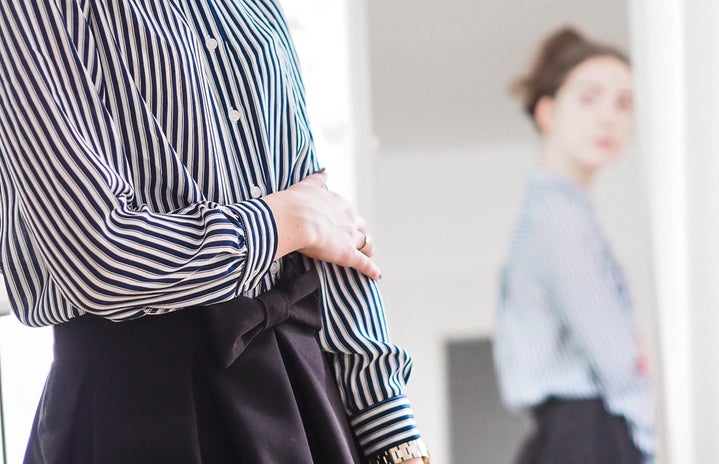I recently attended an etiquette seminar that covered everything from conversation starters to email signatures to how to dress in the workplace. I found the hour and a half zoom call incredibly informative and had five pages of detailed notes to show for it by the end. However, the seminar’s leader said something that stuck with me, and I have been giving it a lot of thought since.
When covering formal business attire for women, she said that women were required to wear a blazer and a pair of slacks. Even business casual mandated a button-down with pants or at least a blazer on top of a dress. Having watched my mom acquire a collection of blazers over her career, I knew that women often wore suits in the workplace.
Nowadays, in the era of Zoom, pairing a button-down or blouse with pajama bottoms is the norm. Watching my parents transition to virtual work has shown me that offices -where blazers were once required- are now accepting a nice shirt and a clean Zoom background in lieu of a jacket. As people return to the office, hopefully, work attire will remain more relaxed. More importantly, I foresee a change in what is considered formal business attire.
When I heard that women’s business attire required menswear, I felt outraged. Formal business attire always means muted tones like black, navy, and gray. It means quality fabrics, well-fitting garments, and practical accessories. It does not mean that women should be expected to wear pantsuits. The idea that menswear is more professional than traditionally feminine clothing like dresses is inherently sexist.
Don’t get me wrong, I love dress pants and button-downs. They are comfortable. They come in fun patterns, and they hail from an era of fashion that asserted that, yes, women do belong in the workplace. Eighties professional fashion centered on women wearing men’s clothing and gave rise to the famous pantsuit we all know today. At the time, it was a statement that women could be primary earners, enter the workforce, and have successful careers – just like men. Now, pantsuits make just as powerful a fashion statement. However, we should perceive women as equally professional and powerful if they choose to wear a dress instead.
A dress can be just as formal as a blazer, and there’s no reason that traditionally masculine clothing should be required for a woman to look professional. Asking women to put a jacket over their dresses perpetuates the idea that masculine clothing is somehow more suited for a professional environment than its feminine equivalent. We cannot conflate professional attire with the masculine dress. It visually reconstructs sexism. It caters to gross and outdated ideas about men being more suited to the workforce than women. To say that menswear is more professional than womenswear is to say that men belong in the professional world more than women.
It’s not just preferences for blazers and pantsuits that are the culprit. Even button-downs should not be a must! As every woman with a larger chest knows, clothing that was originally designed for men sometimes does not adapt well to a feminine form. There is a whole world of professional blouses and tops made specifically for women. And they are just as polished as the stuff you can buy at Men’s Wearhouse.
Another issue with professional attire is sizeism. Menswear like suits and slacks are often made for slender bodies and are harder to find in larger sizes. Curvier women may opt for more feminine clothing like dresses and skirts. How we dress depends more on personal preference than body type, but size still plays a critical role in our wardrobes.
The overarching problem is that the unspoken “rules” of formal business attire aim to create a replicable image that is based on the Don Drapers of the world rather than the diverse group of professionals that exists today. For instance, one standby in professional attire is smooth, pulled-back hair. It’s the word “smooth” that’s really problematic because it clearly means “not textured.” Black women in the workplace, as well as anyone with curly hair, may feel pressured to appear more “professional” by straightening their hair. I cannot talk at length about black beauty standards in the workforce because I do not have any experience with it. But it is clear that professional dress codes often cater to white people. Requiring a uniform look will always leave someone out. But that doesn’t mean that definitions of formal attire cannot be tailored to women and people of color. A good start includes dropping the requirements for straight hair and menswear.
As a college student and future professional, I hope for a change in traditional business attire for women. As we transition back to in-person employment, I expect that individuals will be less likely to wear clothing merely for the sake of appearing “professional.” More than that, I anticipate that people will start to consider womenswear an equally formal equivalent to menswear. I expect that blazers, pantsuits, and button-downs will soon become a choice, rather than a must, for women in the workplace.



